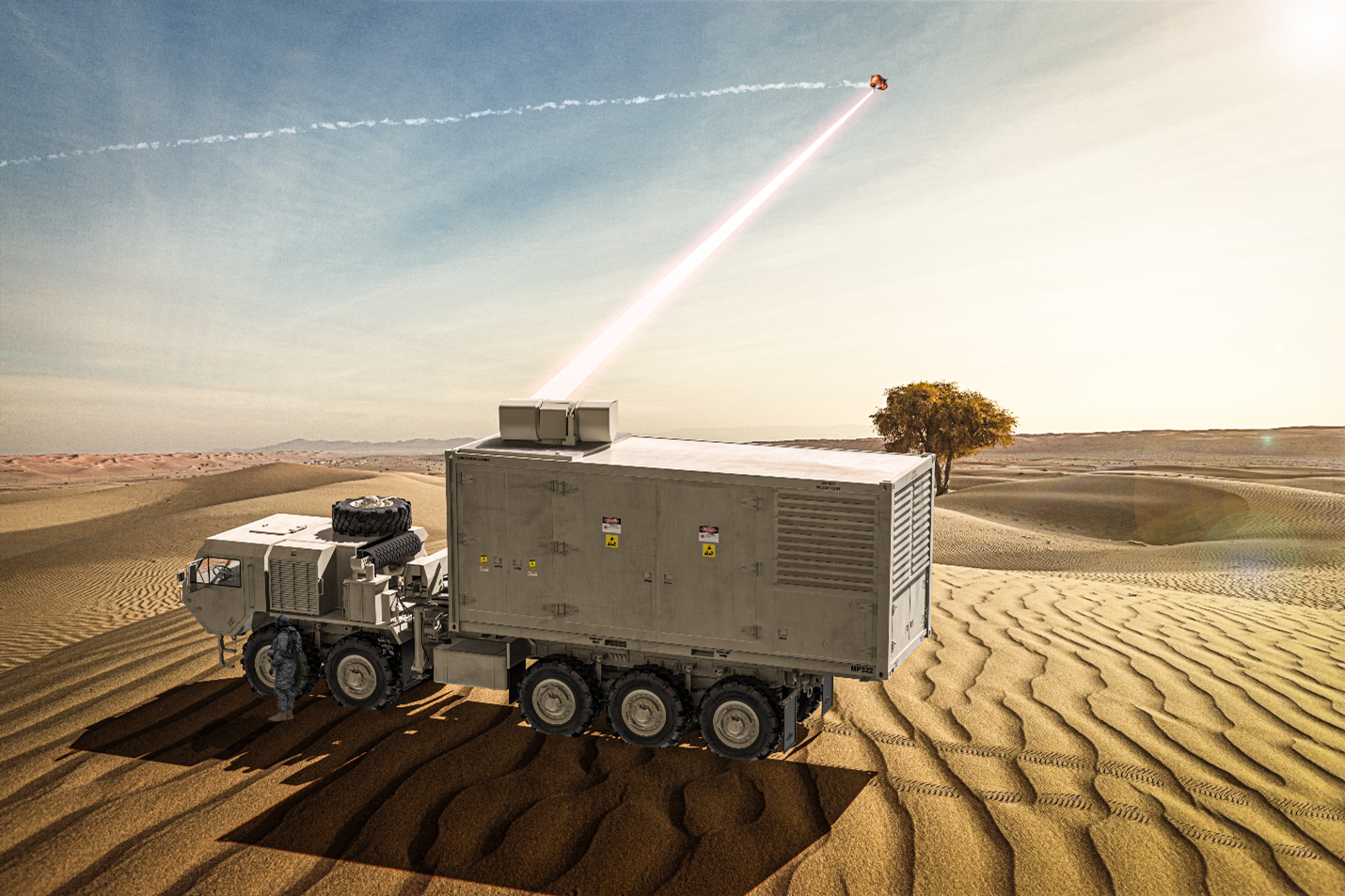Germany announced on October 27 that a high-energy laser weapon system mounted on the frigate Sachsen had successfully killed drones at short and very short ranges for the first time.
The test was conducted on August 30 in the Baltic Sea near the Putlos Major Training Area.
The Army’s laser weapon demonstrator was built by the High-Energy Laser Naval Demonstrator working committee (“ARGE”), which included MBDA Deutschland GmbH and Rheinmetall Waffe Munition GmbH.
In a statement, Rheinmetall said that the ARGE integration team completed the factory acceptance test at Rheinmetall’s Unterluess site in November 2021, kicking off the naval demonstrator’s joint integration and testing phase.
Following that, the demonstrator was mounted on the frigate Sachsen in Kiel. The first test campaign was held in July 2022 at Eckernförde Bay. The latest tests were used to verify the performance of several sensors, including the radar and the electro-optical sensor suite from the ARGE.
Der erste scharfe Schuss mit einer Hochenergie-#Laserwaffe gegen ein dynamisches Ziel wurde erfolgreich durchgeführt. Beteiligt an der bisher einjährigen Erprobung: unsere #WTD71 und #WTD91 und die @deutschemarine gemeinsam mit der Industrie.
Mehr unter https://t.co/MFbNBgNrqU pic.twitter.com/fVgTv2GSZv— Bundeswehr AIN (@BaainBw) October 27, 2022
Additionally, the interaction between each component and procedure throughout the full operating sequence, from target acquisition to engagement, was tested.
/2022/10/27/image/jpeg/vGB6XDmKPXkFjvvS4OmAW9I5suya8lXYtuC1qrUn.jpg)
The statement further highlighted that the trials comprised a variety of highly realistic engagement settings, according to the partners. The Federal Office of Bundeswehr Equipment, Information Technology, and In-Service Support was in charge of test planning and providing a variety of targets from the air, sea, and land.
Dr. Markus Jung, who oversees the development of laser weapons at Rheinmetall Waffe Munition GmbH, and Daniel Gruber, project manager for MBDA Deutschland’s naval demonstrator, stated that the ‘historic event’ was a special occasion for everyone involved because the team was successful in proving the demonstrator’s capabilities to the full extent.
“Solid teamwork between the two ARGE partners played a key role in helping us integrate a fully functional, high-performance demonstrator onboard the frigate,” said Gruber.
“Close cooperation with the command team of the Sachsen enabled direct communication with the future user. This way, ideas from the Navy could be directly incorporated or implemented during subsequent development,” Gruber added.
Dr. Thomas Baumgärtel, project manager for the naval demonstrator at Rheinmetall Waffe und Munition GmbH, stated that the demonstrator’s main components are genuinely cutting-edge.
Baumgärtel explained that this results from several years of research by the two firms involved and that “many of the demonstrator’s system components were developed especially for the project and combined in this form for the first time.”

More Tests In The Future
In the future, the German Navy could employ this laser weapon to counter approaching speedboats and avoid drones and drone swarms at short and very short ranges. The system, however, can potentially be designed for higher output, enabling it to shoot down mortar rounds and guided missiles.
The recent trials have already prepared the ground for integrating laser weapon systems and capabilities into the Bundeswehr, allowing the defense sector to advance the development of laser systems that will aid in the protection of troops worldwide.
The company now intends to test the high-energy laser weapon until mid-2023. The capabilities of the demonstrator will be tested in the subsequent test campaigns by implementing new scenarios. What needs to be done to create a fully functional, operating laser weapon will be influenced by the information gathered from these trials.
The US military has also made advances in the field of laser weapons, with Lockheed Martin spearheading numerous programs. On April 13, the US Navy announced that a target emulating a subsonic cruise missile in flight was neutralized for the first time using an all-electric, high-energy laser weapon.

The weapon used in the test was a multi-domain, multi-platform demonstration system called Layered Laser Defense (LLD), built by Lockheed Martin.
In September, Lockheed Martin announced that it had supplied a 300-kilowatt laser to the Defense Department for use in upcoming high-energy laser demonstrations.
The Pentagon’s High Energy Laser Scaling Initiative (HELSI), which intends to broaden the directed energy industry base and improve the quality of laser beams, commissioned Lockheed Martin to develop the laser.
The Pentagon chose Lockheed in 2019 to scale its spectrum beam combined high energy laser design to the 300 kW-class level as part of the HELSI project.
Nonetheless, these measures by many governments are intended to address worries about not being fully equipped to protect themselves against drones or even large swarms of drones that can overwhelm defense systems.
- Contact the author at ashishmichel@gmail.com
- Follow EurAsian Times on Google News




